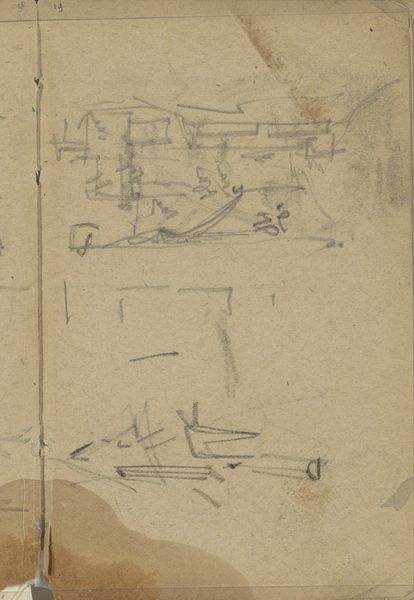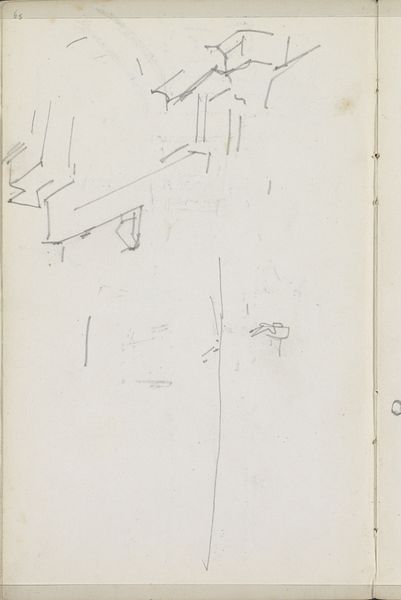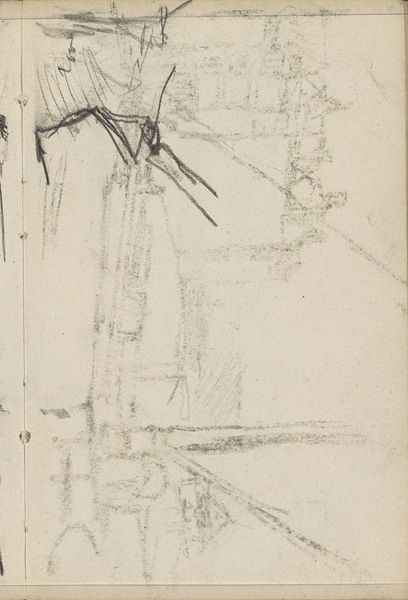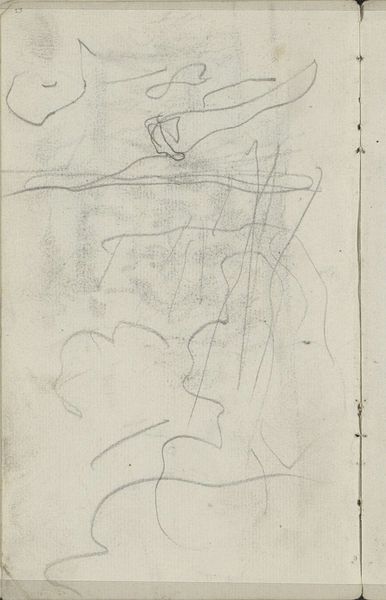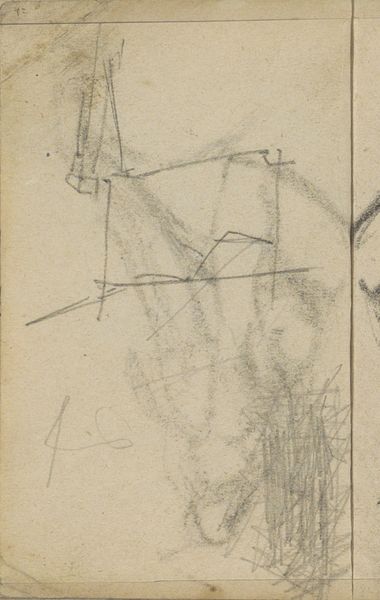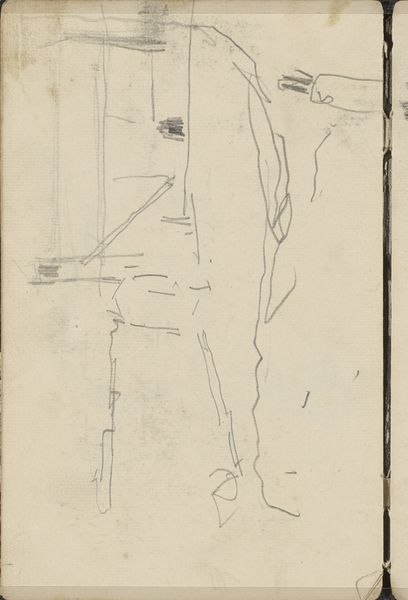
Copyright: Rijks Museum: Open Domain
Editor: This is a page from a sketchbook by George Hendrik Breitner, simply titled "Studie," likely created between 1900 and 1923. It's a light pencil drawing on aged paper. It has this really raw, almost accidental feeling. What jumps out at you about this piece? Curator: Well, I find it fascinating as a historical artifact, even beyond its aesthetic qualities. These glimpses into an artist's process offer valuable insights into the artistic ecosystem. The fact it's a sketchbook page – seemingly amateur and incomplete – highlights the institutional value placed on artists' "private" work. Breitner probably never intended this for public consumption, yet here it is, framed by the Rijksmuseum. Does the setting influence our view of what constitutes important art? Editor: That’s a great point! So, its location gives it meaning? Curator: Absolutely. The socio-political aspect comes into play when we consider which artists and works are chosen for preservation and display. Whose stories are told, and by whom? The incompleteness can be seen as part of its appeal: Breitner's Amsterdam street scenes often showed a gritty realism, which some viewed as “ugly,” resisting romanticised landscapes. In this context, we might view the sketchbook’s loose sketches and hand-drawn letters, alongside the aged paper, as signs of unvarnished reality escaping artistic formalization, but simultaneously gaining worth *because* a prominent museum curates it. How do you read the visual elements now? Editor: Thinking about it that way makes me wonder if the museum elevates something ordinary, to solidify certain images of artists? It seemed like just scribbles at first. Curator: Precisely. The politics of imagery are always at play. Museums don't just present art; they construct narratives around it. Something personal like this invites questions. Perhaps it demonstrates how public opinion and institutions validate art by assigning historical value, a role often conflicting with artists’ intent. Editor: So, viewing it as a historian, it reveals a whole conversation about art's value. I’ll never look at sketches the same way! Curator: Exactly! And hopefully, question who frames our perspective when looking at the sketches, from here on.
Comments
No comments
Be the first to comment and join the conversation on the ultimate creative platform.
